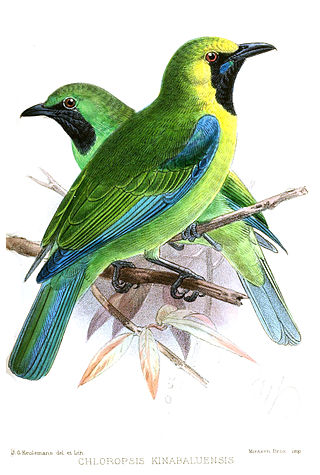
Quercus petraea, commonly known as the sessile oak, Cornish oak, Irish Oak or durmast oak, is a species of oak tree native to most of Europe and into Anatolia and Iran. The sessile oak is the national tree of Ireland, and an unofficial emblem in Wales and Cornwall.

Quercus pontica, the Pontine oak or Armenian oak, is a species of endangered oak currently extant to the western Caucasus mountains of Georgia and northeastern Turkey where it grows at altitudes of 1,300–2,100 metres.

Quercus faginea, the Portuguese oak, is a species of oak native to the western Mediterranean region in the Iberian Peninsula. Similar trees in the Atlas Mountains of northwest Africa are usually included in this species, or sometimes treated as a distinct species, Quercus tlemcenensis. It occurs in mountains from sea level to 1,900 metres above sea level, and flourishes in a variety of soils and climates. Out of all the oak forests in the Iberian Peninsula, the southern populations of Portuguese oak were found to have the highest diversity and endemism of spider species.
The mountain serpent eagle, also known as the Kinabalu serpent eagle, is a bird of prey that is found in northern Borneo. It is found at altitudes of 1,000–4,100 metres (3,300–13,500 ft) in forest, especially where it becomes stunted. Where their range overlaps, the crested serpent eagle generally occurs at lower altitudes. The mountain serpent eagle is darker than the Bornean subspecies of the crested serpent eagle.

The Bornean leafbird, also known as the Kinabalu leafbird, is a species of bird in the family Chloropseidae. It is found in humid forest in Borneo, to which it is endemic. It has traditionally been considered a subspecies of the blue-winged leafbird, but differ in measurements and morphology, the female Borneon leafbird having a distinctive male-like plumage. The distribution of the two are known to approach each other, but there is no evidence of intergradation.

Quercus germana, the Mexican royal oak, is a species of oak tree in the family Fagaceae. It is native to mountain cloud forests in eastern Mexico. It is placed in section Quercus.
Quercus vicentensis is a species of oak tree in the family Fagaceae, native to southern Mexico and northern Central America. It is placed in section Quercus.

Quercus acuta, the Japanese evergreen oak, is an oak native to Japan, South Korea, Taiwan, and China's Guizhou Province and Guangdong Province. It is placed in subgenus Cerris, section Cyclobalanopsis.

Quercus rotundifolia, the holm oak or ballota oak, is an evergreen oak native to the western Mediterranean region, with the majority on the Iberian Peninsula and minor populations in Northwest Africa. The species was first described by Jean-Baptiste Lamarck in 1785. It is the typical species of the Iberian dehesa or montado, where its sweet-astringent acorns are a source of food for livestock, particularly the Iberian pig. Its acorns have been used for human nourishment since the Neolithic era. It is placed in section Ilex. It has previously been described in the same species as Quercus ilex.
Quercus repanda is a species of oak endemic to the mountains of central Mexico.

Quercus glabrescens is a species of oak. It is endemic to the mountains of east-central Mexico.
Quercus urbani, also known as Quercus urbanii, is a species of oak. It is native to western and central Mexico from Sinaloa, Durango, and Zacatecas to Oaxaca. It was previously synonymized with Quercus pennivenia, but this was restored as an independent species in 2020.
Quercus cualensis is a rare species of oak. It has been found only in a small region in the State of Jalisco in western Mexico, in the Sierra el Cuale mountains south of Puerto Vallarta.
Quercus treubiana is a member of the Quercus (oak) genus, placed in subgenus Cerris, section Cyclobalanopsis. It is found in the tropical mountain forests of Borneo and Sumatra at altitudes between 600 and 2200m. It is named for Melchior Treub, 1851–1910, who was until 1909 Director of the Bogor Botanical Gardens, Indonesia. It was first formally named by Karl Otto von Seemen in 1906 in the Bulletin de Département de l’Agriculture aux Indes Néerlandaises. It is also been referred to as Cyclobalanopsis treubiana (Seemen).
Quercus lowii is a species of oak (Quercus) native to the mountains of northern Borneo.
Quercus lineata is a species of Quercus (oak) in the beech family Fagaceae, belonging to subgenus Cerris, section Cyclobalanopsis. It was first described by Carl Ludwig von Blume.

Tenompok Forest Reserve is a protected forest reserve in Ranau District of West Coast Division, Sabah, Malaysia. It was designated as a Class 1 Forest Reserve by the Sabah Forestry Department in 1984. Its area is 1,984 hectares (19.84 km2). A former reserve, the Kampung Bundu Tuhan Native Residence Reserve, occupied what is now the eastern portion of Tenompok. The reserve is mountainous, reaching 1,660 metres (5,450 ft) above sea level. Vegetation consists of lower montane forest and montane kerangas forest. Both share a similar species composition, although trees in montane keranga forests are smaller. The reserve's Tomis River is a tributary of the Tuaran River. The area of the reserve has never received significant logging, aside from small amount near what are now its borders. This small logging is thought to be carried out by nearby villages for local use. There is also some agricultural encroachment. The reserve lies between Kinabalu Park and Crocker Range National Park. One farmer has a house within the reserve. There are several settlements around the reserve, along with agricultural land.

Quercus crispipilis is a species of oak native to Chiapas state in southern Mexico and to Guatemala.

Quercus saltillensis is a species of oak. It is native to northeastern Mexico. It is placed in Quercus section Lobatae.











